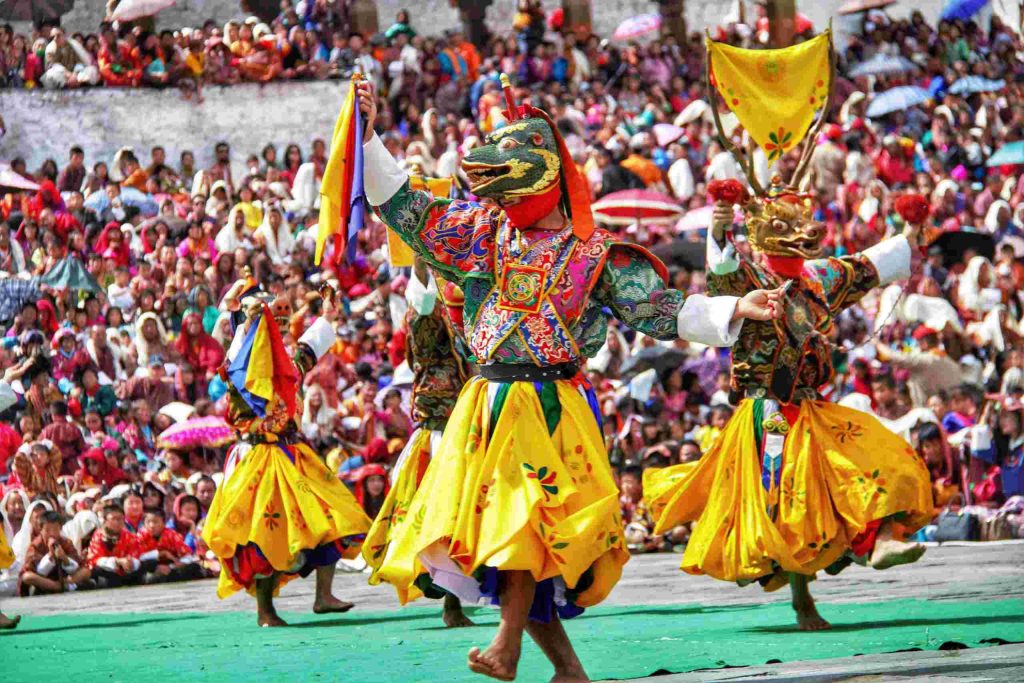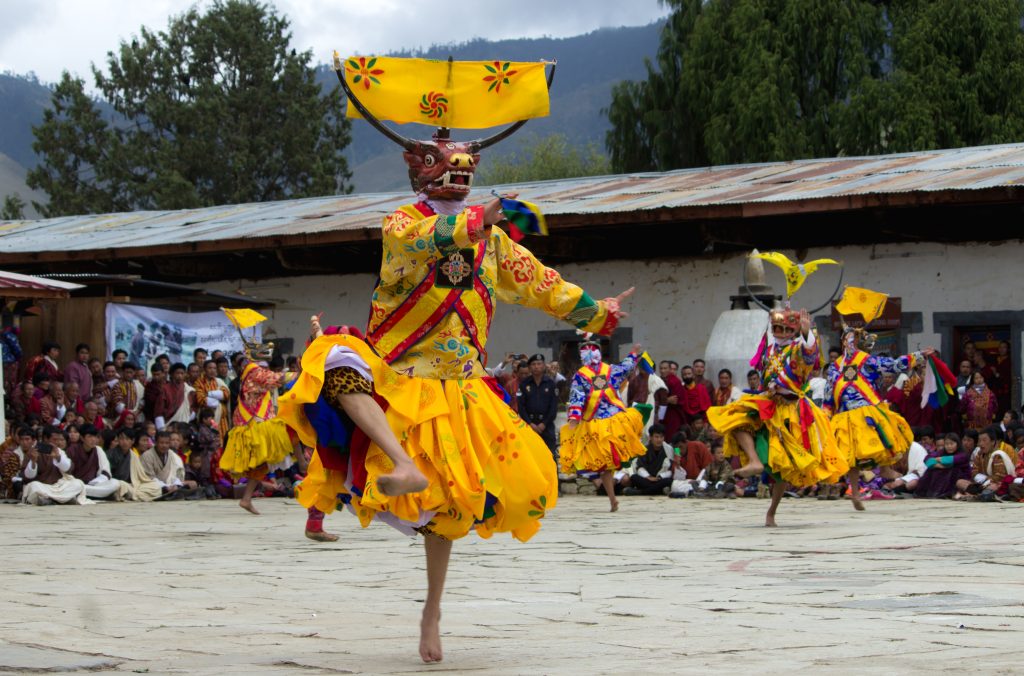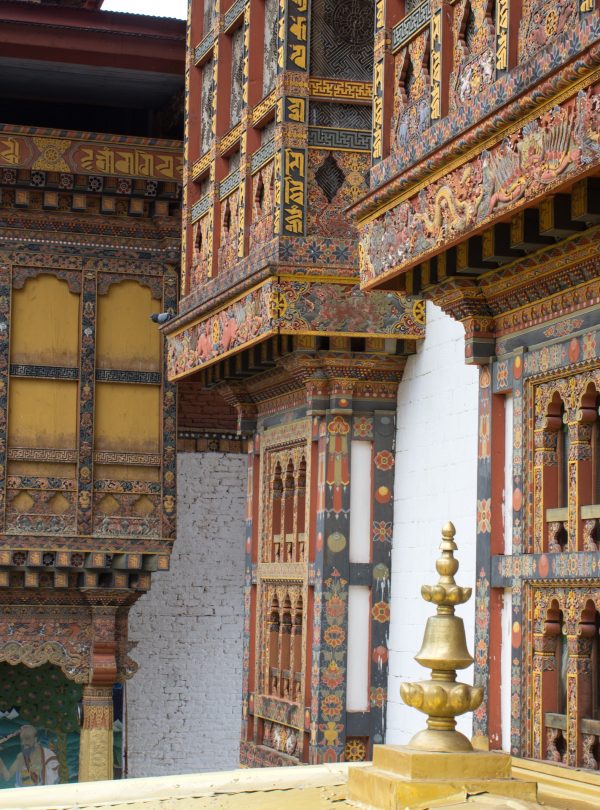Overview
Bhutan, officially the Kingdom of Bhutan is a landlocked country in South Asia. Located in the Eastern Himalaya, it is bordered by Tibet in the North and India to the South, East and West. Bhutan is geopolitically in South Asia and is the region's second least populous nation after the Maldives. Bhutan got approximately 0.7 million populations, where 60% of them are farmers. Bhutan’s is an underdeveloped country with a small economy, but education, health care, medical consultation, medical treatment and medicines are all provided by the state. Renewable Hydropower is the highest income generator and next comes tourism. Thimphu is its capital and largest city.
Our cultural tour offers insightful experience with visit to ancient Buddhist temples and fortress, walking through villages meeting locals and seeing their simple living and witnessing the colorful festival.
Itinerary
The flight into Paro, Bhutan is one of the most spectacular in the world, which provides the great view of the Himalayan snowcapped mountains hiding behind the clouds, beautiful valleys with terraced rice fields and mountains terrains covered with forests and magnificent monasteries and temples. The landing at Paro International Airport has been described by many people as breathtaking and challenging at the same time.
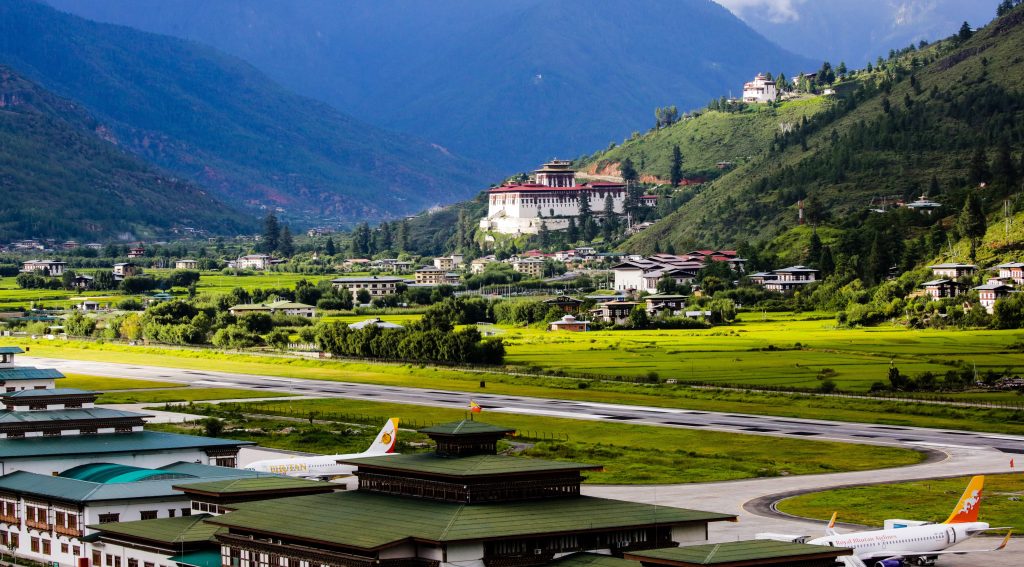
Paro International Airport
On Arrival Drive to Thimphu (2300m, 60km, 1Hr.)
Thimphu, Bhutan’s Capital City, is the most modern city in Bhutan with various offices, restaurants, nightclubs and shopping streets. The Kingdom’s capital city is home to approximately one hundred fifty thousand inhabitants including the Royal Family of Bhutan. One of the most curious features of Thimphu is that, it is the only city in the world that does not have traffic lights and franchise businesses.
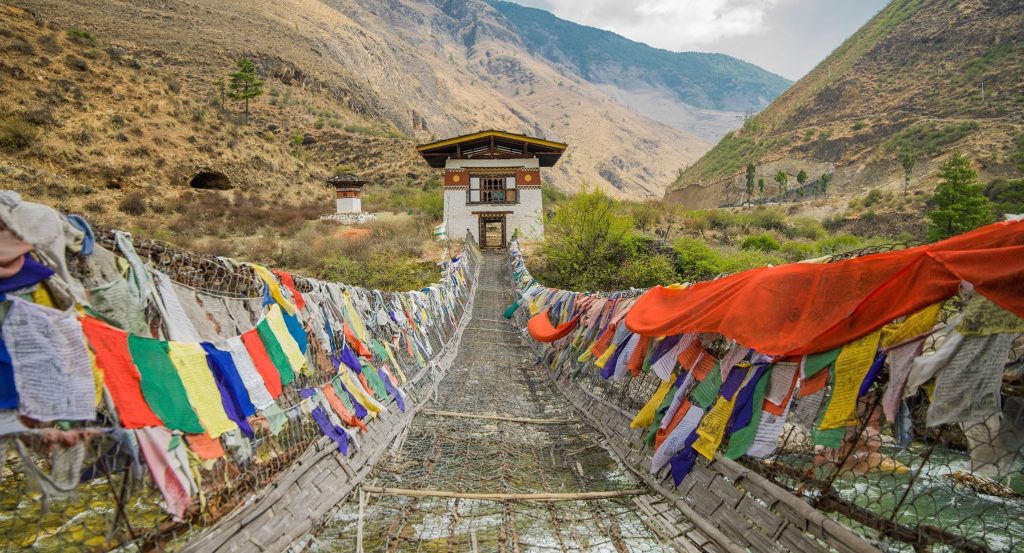
Tamchog chain bridge
Enroute Visit
Tamchog Monastery and Iron Bridge - In 15th century, a renowned Saint, Thangthong Gyalpo built the iron chain bridge here and is said to have built 108 of these bridges around Tibet and Bhutan. Many of them are still in use today, showing how strong and durable the bridges are.
The 3rd King's Memorial Chorten (Stupa) - It was built in the memory of the third King of Bhutan (the father of modern Bhutan), who reigned from 1952-1972).
The Buddha Doedenma Statue - This massive statue of Buddha Shakyamuni measures in at a height of 51m, making it one of the largest statues of Buddha in the world. The statue is made of bronze and is gilded with gold.
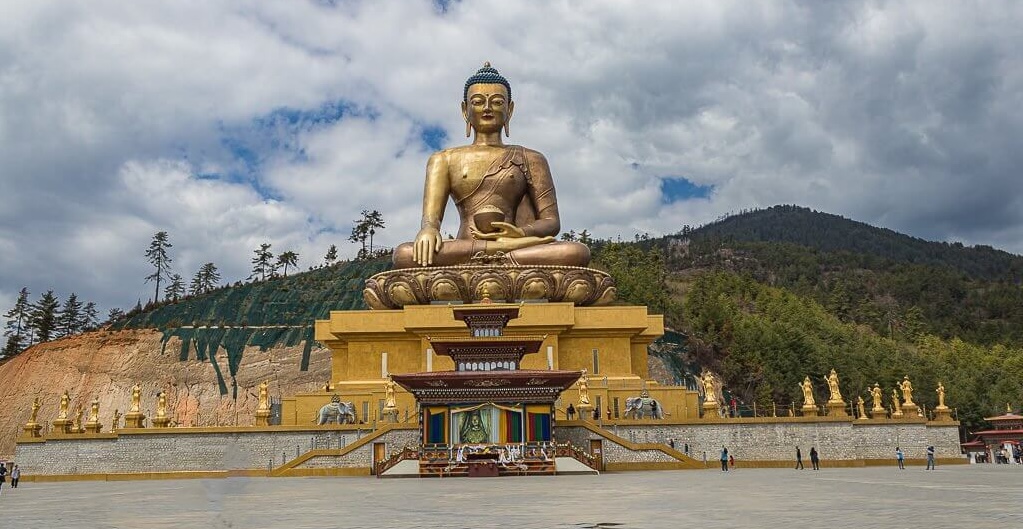
Buddha Doedenma Statue
Takin Preserve – to see the national animal of Bhutan. It’s an endangered species with unique features.
The institute of 13 traditional arts and craft – Institute provides vocational training opportunities for different arts and crafts found in the country. Ten of the Traditional arts and crafts are studied here, including Thangka paintings, embroidery etc.
Simply Bhutan Museum - is an interactive 'living' museum that gives a good guided introduction to various aspects of Bhutanese traditional life.
Craft Market – A market at the downtown of capital city where they sell authentic products made in Bhutan and by the Bhutanese.
Tashichho Dzong (fortress), which means the “fortress of glorious religion’’ is the main Secretariat Building, which houses the office of the King, ministries and the throne room.
Overnight at hotel in Thimphu.
Early Morning visit to Gyalwa Dokhampa Monastery in Kabesa, Thimphu (11km, 30mins)
Thimphu to Punakha (1300m, 78km, 2hrs)
Later drive to Punakha crossing Dochula Pass (3150m) and take a break for a spectacular view of the snowcapped mountains.

108 stupas at Dochula
Punakha is located in the low sub-tropical valley about 1300m alleviation and was the capital of Bhutan until 1955. It is still the winter home of the Chief Abbot of Bhutan and the Central Monastic Body. The warmer climate in Punakha allows to produces abundant crops and fruits like oranges, mangos, bananas and we can even see cactuses.
Chimi Lhakhang widely believed to be the temple of fertility. A temple dedicated to a saint Lama Drukpa kuenley (the divine mad man). This temple is special for childless couples wanting to conceive. The visitors get blessed by big wooden phallus.
Punakha Dzong built in 1637 by founder of Bhutan, Zhabdrung Ngawang Namgyel. Its stands majestically between the two rivers Pho Chhu and Mo Chhu (Male and Female rivers). The Punakha Dzong is an architectural wonder and has played a prominent role in the civil and religious life of the kingdom.

Suspension bridges later walk on the longest suspension bridge over the Phhochhu river.
Overnight at Punakha.
Drive back Paro again crossing Dochula Pass via Thimphu. (3 hrs)
Paro is one of the widest valleys in the kingdom and is covered in fertile rice fields and has a beautiful, river meandering down the valley. One of the distinctive features of Paro town is that it is situated in a flat valley bottom. It is close to the historical and most popular site Tiger Nest.
Paro Ringpung Dzong, “The Fortress on a Heap of jewels” was built in 1644 by the founder of Bhutan. The fort was used on numerous occasions to defend the Paro valley from invasions by Tibet. The British political officer John Claude White reported that in 1905 there were old catapults for throwing great stones stored in the rafters of the Dzong’s verandah.
Witness the most revered religious festival Paro Tshechu showcasing the country’s rich deep rooted cultural heritage and spiritual tradition.
Ta Dzong - The cylindrical building was built in 1651 the then Governor of Paro. It was built as a watch-tower to overlook Paro valley and Ringpung Dzong, now converted to National Museum of Bhutan.
Kichu Lhakhang - the other oldest temple before the arrival of Guru Rinpoche originally built in the 7th by the Tibetan Emperor Songsten Gampo.
Overnight at Paro.
Experience Bhutan’s most valued attactions, the most famous temple situated at 3,100 meters.
Taksang – the tiger’s Nest is one of the most sacred sites where Guru Rinpoche is said to have flown on the back of a tigress to meditate in a cave where the temple now stands.
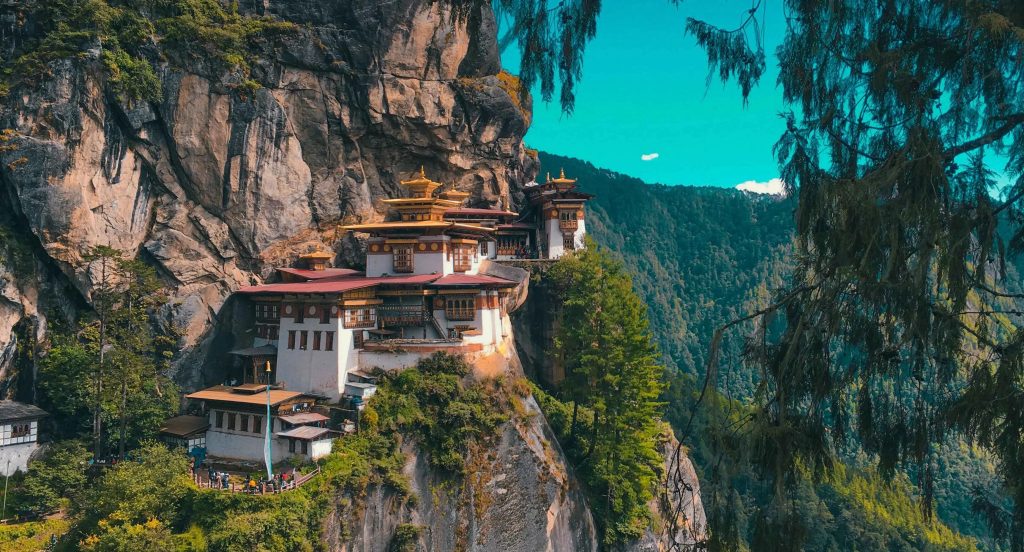
Lunch at Taksang Cafeteria.
Drukgyel Dzong - built in 1649 to commemorate Bhutan’s victory over Tibetan invasion was destroyed by fire and now has been rebuilt to its former glory.
Explore Paro town.
Overnight at Paro
Departure from Paro International Airport.
The Includes
- *Government Sustainable Development Fees.
- *Visa Fees.
- *Museum and Monument Entrance Fees.
- *Rooms in 3-star hotels. (1 Twin, 2 Singles)
- *Meals Breakfast and dinner in the Hotel, Lunch in Local restaurant.
- *Mineral water.
- *English Speaking Guide.
- *Private Transportation (Hyundai H1). Airport Pick up, drop and sightseeing.
The Excludes
- *Single room Supplement Charges.
- *Flight Fares.
- *Bank Transfer Fees.
- *Alcoholic/non-alcoholic beverages.
- *Travel Insurance.
- *Any Personal Expenses.
- *Horse riding at Tiger Nest
- *Gratuity
Frequently Asked Questions (FAQs)
